With the growing concern about climate change and air quality, we all want to do our part in creating a healthier environment.
One simple yet effective way to achieve this is by filling your home or workspace with indoor plants that produce high oxygen levels while also purifying the air.
In this blog post, we’ll reveal the top 10 highest oxygen-producing indoor plants recommended by experts, including NASA’s own findings in their studies on air-purifying houseplants.
So let’s dive into this green journey together and discover how these amazing plants can improve your surroundings and contribute to a cleaner and more sustainable world.
10 Best Oxygen-Producing Plants Indoor
Areca Palm
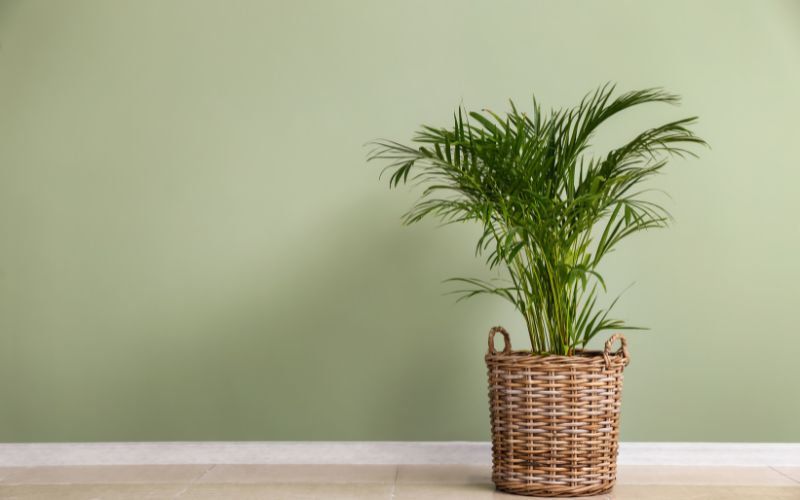
The Areca Palm is one of the top 10 highest oxygen-producing indoor plants and plays a crucial role in improving air quality within your living space.
This attractive plant offers aesthetic appeal and substantial health benefits, making it an excellent addition to any home or office concerned about climate change.
NASA has conducted extensive research on this remarkable plant, discovering that it effectively eliminates various toxins from the air – a testament to its superior air-purifying properties.
To optimize oxygen production, consider placing two Areca Palms close to each other; doing so can dramatically increase their combined efficacy in purifying your environment.
Snake Plant

The snake plant, scientifically known as Sansevieria trifasciata, is one of the top 10 highest oxygen-producing indoor plants and a natural air purifier.
According to NASA’s Clean Air Study, this resilient houseplant improves indoor air quality by removing toxins such as benzene, formaldehyde, and trichloroethylene from the atmosphere.
Nicknamed “mother-in-tongue,” the snake plant boasts long and waxy leaves that effectively capture dust particles in your home’s environment, enhancing air quality.
As an added benefit, it requires minimal care and thrives even in low-light conditions; thus making it an ideal choice for busy individuals seeking effortless ways to incorporate greenery into their lives while addressing climate change concerns.
Spider Plant
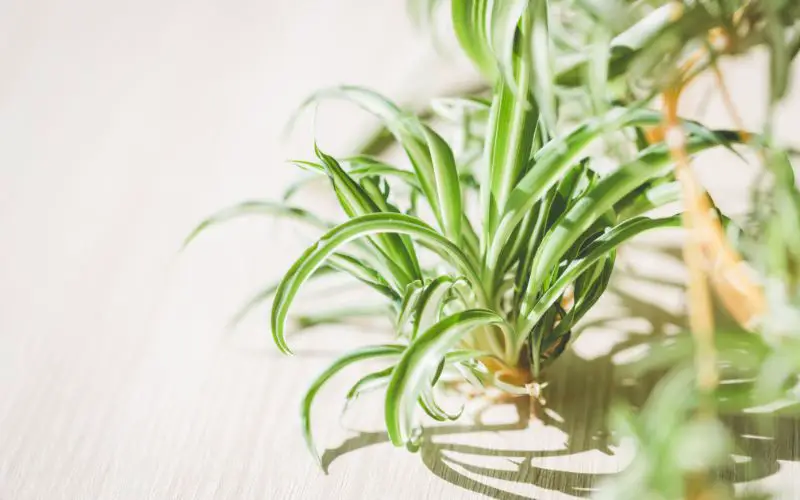
The Spider Plant, scientifically known as Chlorophytum comosum, is an exceptional addition to any home or office for its remarkable oxygen-producing capabilities.
Ranked among the top 10 highest oxygen-producing indoor plants, this resilient plant not only releases fresh oxygen but also effectively filters out harmful pollutants from the air.
One of the reasons behind the increasing popularity of Spider Plants as a preferred choice for the best indoor plant for oxygen is their low-maintenance nature.
This adaptable species can thrive in various conditions with minimal care and watering requirements, making it suitable even for beginner gardeners.
Besides improving air quality and contributing positively towards increased oxygen levels indoors, having a Spider Plant has enhanced mood and productivity among individuals concerned about climate change.
Peace Lily
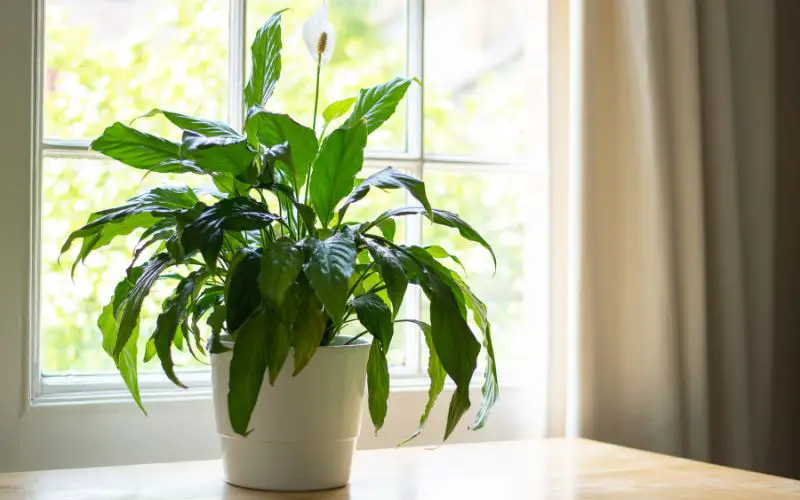
Peace Lily is a popular indoor plant known for its ability to produce high levels of oxygen. Also referred to as Spathiphyllum Wallisii, this beautiful houseplant is on the list of the top 10 highest oxygen-producing indoor plants.
The Peace Lily adds a touch of nature to any room and purifies the air by removing toxins such as formaldehyde, benzene, and carbon monoxide.
But that’s not all! In addition to producing oxygen, Peace Lilies are also recognized for distributing positive energy and aiding anxiety and stress management.
This makes them an excellent choice for anyone who wants to improve their overall well-being while also impacting climate change by increasing the level of oxygen in their home or office space.
Aloe Vera

Aloe Vera is a remedy for sunburns and one of the best oxygen-producing indoor plants on our list.
Unlike most other plants, this easy-to-maintain plant effectively filters out common toxins, such as aldehydes and benzene, from the air while emitting oxygen at night.
Researchers have found that Aloe Vera is excellent at removing airborne pollutants like formaldehyde, often present in cleaning products.
NASA even included this versatile succulent in their Clean Air Study because of its remarkable ability to purify indoor air.
Gerbera Daisy

The Gerbera Daisy, also known as the Barberton daisy, is an indoor plant that produces high levels of oxygen and eliminates harmful air contaminants such as formaldehyde, benzene, and trichloroethylene.
According to NASA’s Clean Air Study, this vibrant flowering plant ranks among the top ten highest oxygen-producing indoor plants. The bright and colorful blooms on the Gerbera daisy add a cheerful touch to any space while enhancing air quality.
This versatile plant can also produce significant amounts of oxygen at night, making it perfect for placing in a bedroom or other living spaces where you want fresh, clean air, even when you’re asleep.
Tulsi
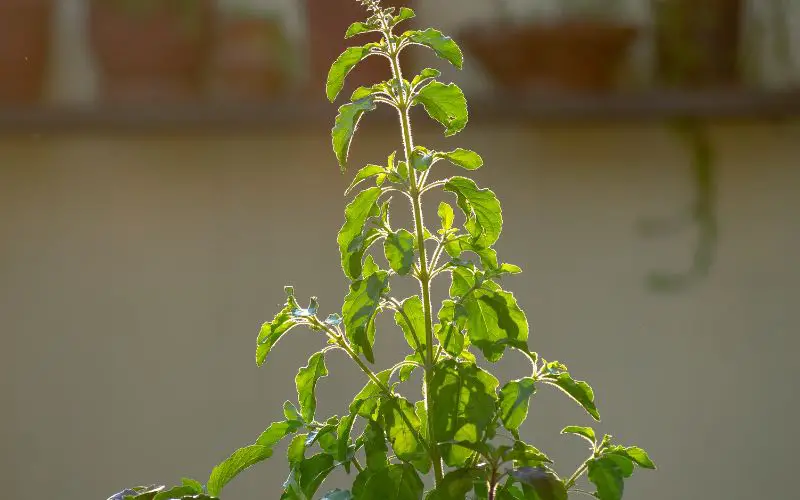
Tulsi, also known as Holy Basil, is a small aromatic shrub native to India. Apart from being a popular plant in Ayurvedic medicine, it has become an essential houseplant due to its numerous benefits for indoor air quality.
Tulsi releases high amounts of oxygen at night while purifying the air by removing harmful toxins like formaldehyde and xylene. This makes it ideal for bedrooms where better sleep quality can be achieved with increased oxygen levels.
In addition to its ability as one of the best producers of oxygen indoors, Tulsi comes in wide varieties, including purple-leafed or dark-stemmed cultivars, which add a beautiful touch to any room decor style while creating clean and fresh indoor air.
Chrysanthemum

Chrysanthemum is a beautiful indoor plant that enhances the aesthetic appeal of your surroundings and serves as an excellent source of oxygen.
It is one of the top 10 highest oxygen-producing indoor plants that can help purify your air by removing toxins such as ammonia, formaldehyde, and xylene.
This plant thrives in bright light and requires regular watering to keep its environment moist.
If you are looking for an easy-to-care-for houseplant that can improve the air quality in your home or office, chrysanthemum could be exactly what you need.
This plant has been known to help reduce symptoms associated with allergies and asthma due to its ability to remove harmful elements from the atmosphere.
Boston Fern
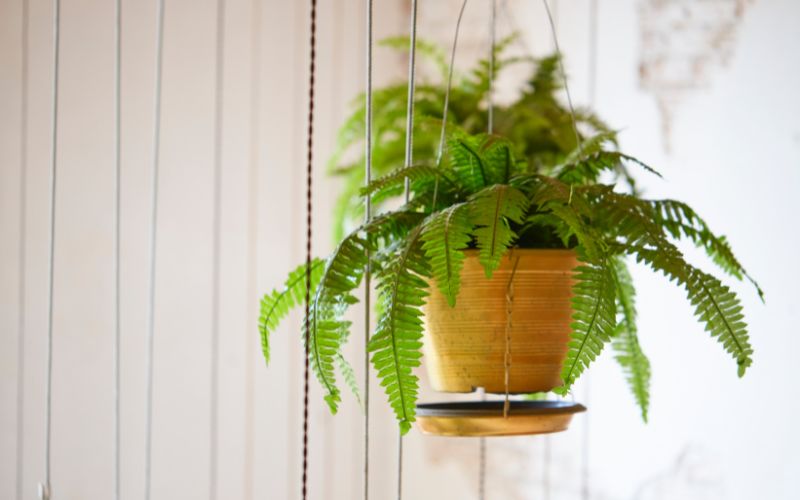
The Boston Fern is a popular houseplant known for its air-purifying properties and ability to produce oxygen.
It’s included in the list of the top 10 highest oxygen-producing indoor plants, making it an excellent choice for those concerned about climate change.
These ferns add a splash of green to any room and improve humidity levels and air quality by filtering formaldehyde, xylene, and toluene from the air.
Boston Ferns are ideal for increasing oxygen levels in homes or offices lacking good ventilation due to their exceptional ability to produce oxygen.
Jade Plant
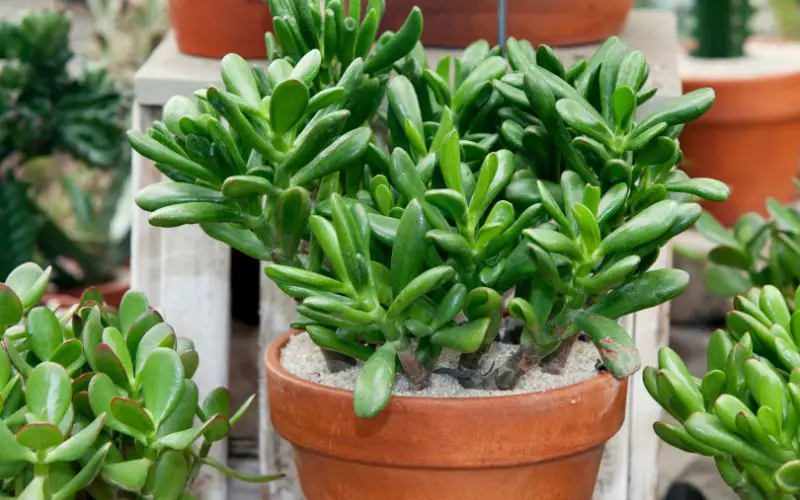
The Jade plant, known as the “money plant,” is popular among indoor gardeners for its low-maintenance qualities and air-purifying abilities.
This easy-to-care-for plant is listed among the top 10 highest oxygen-producing indoor plants, making it an excellent addition to your home or office space.
NASA has studied the Jade Plant for its air-purifying and toxin-removing properties that help improve air quality. In addition to being an effective oxygen producer, it is believed that Jade Plant brings good luck and prosperity to those who care for it.
Benefits Of Having Oxygen-Producing Indoor Plants
Improved Air Quality
Indoor air pollution is a growing concern for many people, especially those worried about climate change. Fortunately, one of the most effective ways to improve indoor air quality is by incorporating oxygen-producing plants into your home or office.
These plants have been scientifically proven to remove harmful toxins from the air, such as formaldehyde and benzene, often found in common household items like cleaning products and furniture.
Furthermore, having oxygen-producing indoor plants can also help increase humidity levels in dry environments, making breathing easier for individuals with respiratory issues.
Additionally, studies have shown that being surrounded by nature positively impacts mental health and productivity levels.
Increased Oxygen Levels
Indoor plants can help increase oxygen levels in a home or office, providing several benefits to those inside. One of the primary advantages is improved respiratory function.
Individuals may experience less fatigue and better cognitive performance with more oxygen circulating in the air.
Higher oxygen levels can also aid sleep quality by promoting relaxation and breathing regulation. Finally, having plenty of oxygen in the atmosphere can support exercise recovery by improving blood circulation and reducing muscle soreness after a workout.
Enhanced Mood And Productivity
Indoor plants contribute to better air quality and increased oxygen levels and may also enhance mood and productivity.
Studies show that being surrounded by greenery has a calming effect, reducing stress and anxiety, which, in turn, can increase feelings of contentment and well-being.
Furthermore, having plants in the workplace or home office may lead to greater productivity, improved focus, and decreased fatigue due to their ability to absorb background noise.
NASA’s Clean Air Study found that indoor plants’ ability to remove toxins from the air could improve cognitive function by up to 15%, making them valuable additions for those who want a healthier workspace or living environment.
Conclusion
In conclusion, adding oxygen-producing indoor plants to your home creates a refreshing and natural ambiance and purifies the air you breathe.
The top 10 highest oxygen-producing indoor plants like Areca Palm, Snake Plant, Spider Plant, Peace Lily, Aloe Vera, Gerbera Daisy, Tulsi, and more, can provide various health benefits, including improved air quality and increased levels of oxygen that enhances mood and productivity.

